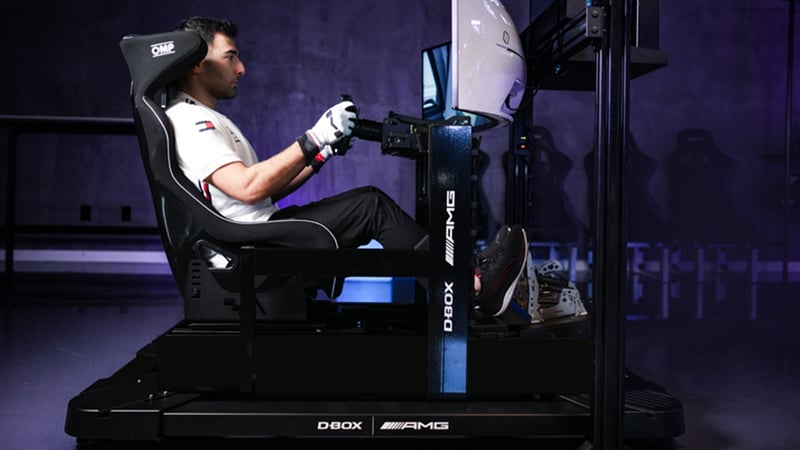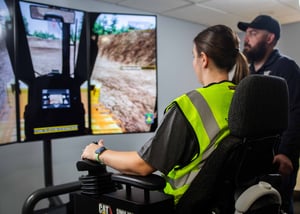Daniel Morad, a professional racer competing in the GT3 and GT4 categories for Mercedes-Benz & a Mercedes-Benz Expert Driver, is no stranger to the demands of high-performance motorsport and all that it entails.

Context: Finding a second passion in sim racing
When real-world racing came to a halt during the COVID-19 pandemic, professional driver Daniel Morad turned to sim racing to stay connected to the sport he loved.
Despite initially being unsure about the eSport and feeling a significant disconnect between sim racing and real-world racing, he knew that sim racing would be the best way to stay active in his sport. Not only that, but he was able to join friends and other professional drivers in the same situation as him.
What started as a way to pass the time during the shutdown soon became a passion. By the time real-life racing resumed, Daniel had developed a genuine love for sim racing and continued to compete virtually alongside his on-track career.
“Being able to race people from all over the world just with, you know, a few button presses, is really cool,” said Daniel, reflecting on the unique opportunities sim racing offers.
Challenge: Overcoming the disconnect between sim racing & real-world racing
Although he developed a second passion for sim racing, Daniel couldn’t shake the disconnect between sim racing and real racing. He knew that a crucial element of real-world racing was missing to make him fully immersed in the experience: physical sensations.
This disconnect left him searching for a solution that could bridge the gap between sim racing & real racing; ultimately bringing the immersive experience of being in a race car to his sim racing setup.
Solution: Finding the perfect haptic motion system
The missing piece to bridge the gap between sim racing and real-world racing was a motion system—but not just any motion system. Daniel tested many of them in search of an authentic experience, but none of them quite recreated the sensations of being behind the wheel on a real track.
“I used to be so against motion,” Daniel explained. “When I tried other motion platforms, I didn't really like the feeling when it moved too much. It kind of threw you around. I felt like it was more of a toy rather than a tool.”
Everything changed when he tried D-BOX haptic technology. “The moment I tried D-BOX G5, my whole experience changed, and my perspective changed on motion,” he exclaimed.
With the recent release of the Mercedes-Benz Motion Platform, Daniel found another way to integrate D-BOX G5’s precision and realism, into his sim racing training.
Results: Turning a hobby into a professional training tool
The Mercedes-Benz Motion Platform delivered exactly the realism Daniel had been searching for. Its subtle yet precise movements, vibrations and textures allowed him to bridge the gap between sim racing and the real track.
“It didn’t move that much, but the vibration is really what set it apart for me,” Daniel explained. “Having that subtle motion where it just kind of tricks your brain into thinking that you're moving way more than you actually are. It's helped me go from my rig to my real car and really feel right at home.”
What started as a sim racing hobby evolved into a valuable training tool, thanks to the unmatched realism of the Mercedes-Benz Motion Platform.
“The D-BOX motion platform is such a great training tool for me because sitting in a stationary rig takes away the key sense that you’re using in a real race car, which is the seat of your pants feeling when the car’s moving underneath you, and having the motion of deceleration and acceleration and longitudinal forces,” he explained. “So, that coupled with the advanced haptics that it features—curb strikes, road texture—it just gives you such an immersive experience where you go from your rig into the real s, and more car, and you really don’t skip a beat.”
With this revolutionary motion platform powered by D-BOX, Daniel is now able to train effectively off the track, gaining the confidence and precision he needs to excel behind the wheel.


